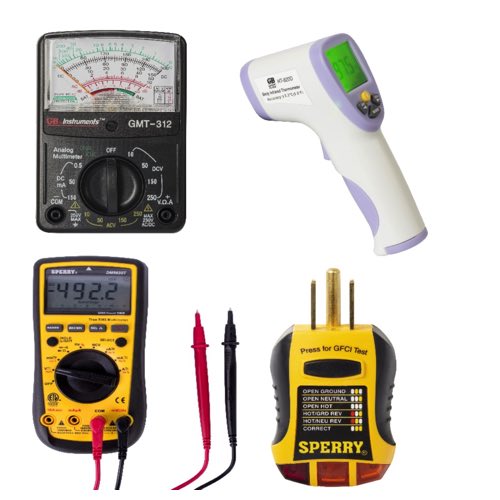Ilsco Test Equipment

Ilsco electrical test equipment is specific and dependable. The tools under the Ilsco name ensure that tests and measurements are performed with precision for a result that is absolutely reliable. With tools like the non-contact voltage detector and circuit breaker finder, Ilsco makes identifying the correct circuit and diagnosing electrical issues as simple and safe as can be. These are essential tools for anybody who has to work with wires, pumps, or control systems. And they are intuitive to use, which makes them perfect for the most complicated and demanding situations.
Ilsco provides digital tools like voltage and resistance testers. Digital tools from Ilsco, like their testers and detectors, take the guesswork out of simple circuit tests. And, more importantly, they offer user-friendly interfaces that are quick and easy to navigate. Both common and specialized tests can be performed with them. But doing a job well and efficiently requires that technicians have access to all of the necessary tools. Ilsco also provides test kits that assemble common tools in a convenient package. One assembling all of the components in an electrical panel might require the things in a test kit, or the things in an electrical tool kit.
More Information about Ilsco Test Equipment
Ilsco remains a trusted company in the electrical industry, providing test equipment that meets the basic demands of not only modern electrical systems but also the systems of yesteryear. Tools are built with practical features and high-quality materials that make them not only durable but also relevant. Performing the tasks for which they were designed, Ilsco test tools help professionals work with much less stress and worry about the safety and efficacy of electrical systems across a broad spectrum of applications and settings.
FAQs
Does Ilsco provide items such as testers for batteries?
No, Ilsco primarily focuses on electrical testing tools like voltage detectors and circuit breaker finders, but it does not specialize in testers for batteries.
Analog and Digital Control Signals: The Basics
Digital Signals
Digital signals are represented in either a true or false. There is no gray area with digital signals. An example of this might be a light switch. A light switch is either on or off. Another example of this might be a motor that is running or not running. Digital signals can be generated with both AC and DC circuits with varying voltages, currents and resistance. Some practical examples of using digital signals in an industrial environment might be if a pump is running or not running or a whether a valve is open or closed.
Analog Signals
Analog signals convey information in the form of a range. A light switch might be on or off as a digital signal, but a dimmer switch would be an analog signal. It can be on or off, but it can also be somewhere in between. A practical example of using analog signals in an industrial environment would be if there is a need to measure the level of a tank; whether it's full, empty or somewhere in between. Analog signals can take many different forms with some of the more common being a 4 to 20 milliamp signal or a 0 to 5 or 0 to 10 volt signal.
Communication
Communication in a device can either be sent or received. Whether that data is sent or received depends on the type of information. Is there a need to monitor the status of something? If so, an input needs to be received about that information. Is there a need to control something? If so, an output needs to be sent about what needs to occur. Receiving inputs and setting outputs are both things that can be accomplished by using both digital and analog signal types. Therefore, the signals are referred to as analog outputs (AO), analog inputs (AI), digital inputs (DI) or digital outputs (DO).

